Uncovering Bristol's connection to transatlantic chattel slavery
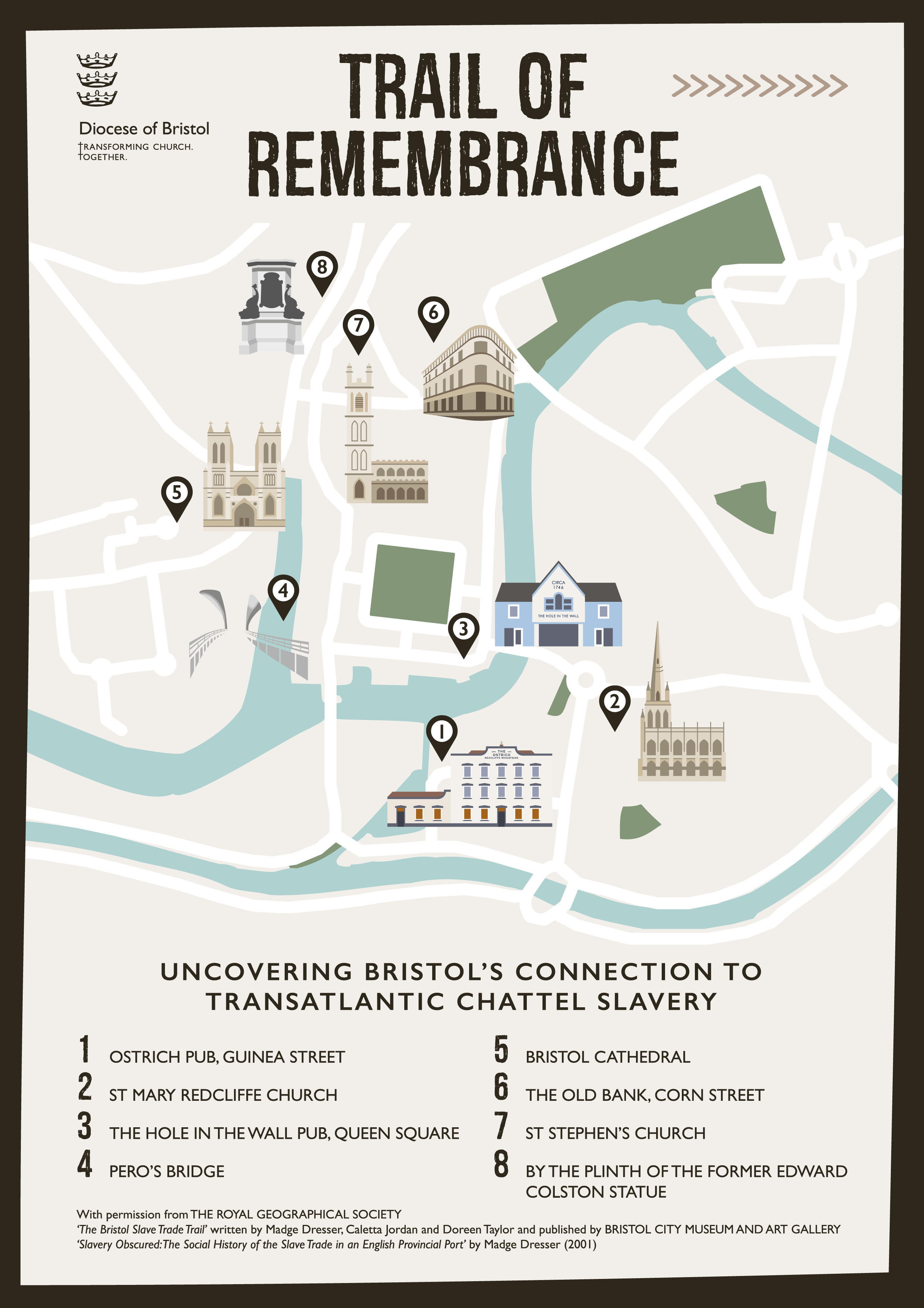 Explore Bristol’s past through the Trail of Remembrance: Uncovering Bristol’s Connection to Transatlantic Chattel Slavery, a self-guided historical walking tour across eight significant locations in the city centre. This trail sheds light on Bristol’s deep-rooted involvement in the transatlantic slave trade, a history integral to understanding the city’s growth and wealth. The tour invites you to reflect on this legacy, fostering a journey of remembrance, and a commitment to racial justice.
Explore Bristol’s past through the Trail of Remembrance: Uncovering Bristol’s Connection to Transatlantic Chattel Slavery, a self-guided historical walking tour across eight significant locations in the city centre. This trail sheds light on Bristol’s deep-rooted involvement in the transatlantic slave trade, a history integral to understanding the city’s growth and wealth. The tour invites you to reflect on this legacy, fostering a journey of remembrance, and a commitment to racial justice.
The tour includes a complimentary audio guide and a PDF map, and takes approximately 1.5 hours to complete. Each stop offers historical insights, prayers, and reflections designed to engage participants in a deeper conversation about the past and its lasting impact.
Why We’re Doing It: Our Commitment to Racial Justice and Contested Heritage
This trail is part of the Diocese of Bristol’s ongoing commitment to racial justice and our work in examining contested heritage within our diocese. As a Diocese, we recognise the importance of acknowledging difficult and dark aspects of our history, including the ways in which the church and city were complicit in the transatlantic chattel slavery. This walking tour serves as a tool for reflection and education, supporting our wider Racial Justice Strategy which focuses on reconciliation, repentance, and transformation.
We believe that by understanding this history and engaging with the uncomfortable truths of the past, we can foster a more inclusive and just future for all. This trail is one element of fulfilling that vision.
Bristol’s Role in Transatlantic Chattel Slavery
Bristol played a significant role in Transatlantic Chattel Slavery, becoming one of the key ports involved in shipping enslaved Africans to the Americas and the Caribbean. Wealth accumulated through the exploitation of enslaved people built much of the city’s infrastructure and wealth, including some of its most famous landmarks. The Trail of Remembrance uncovers the stories of individuals and institutions that profited from this trade and those who were directly impacted by it.
Start Your Journey Today View and download your printable trail map
Play the full audio guide below or read further to find each individual stop
Through this journey, we invite you to reflect on the significance of Bristol’s history, learn from it, and join us in our mission to seek justice, equity, and healing for all communities.
Find below details of each stop with a reflection to accompany them
1. Outside the Ostrich Pub, Guinea Street
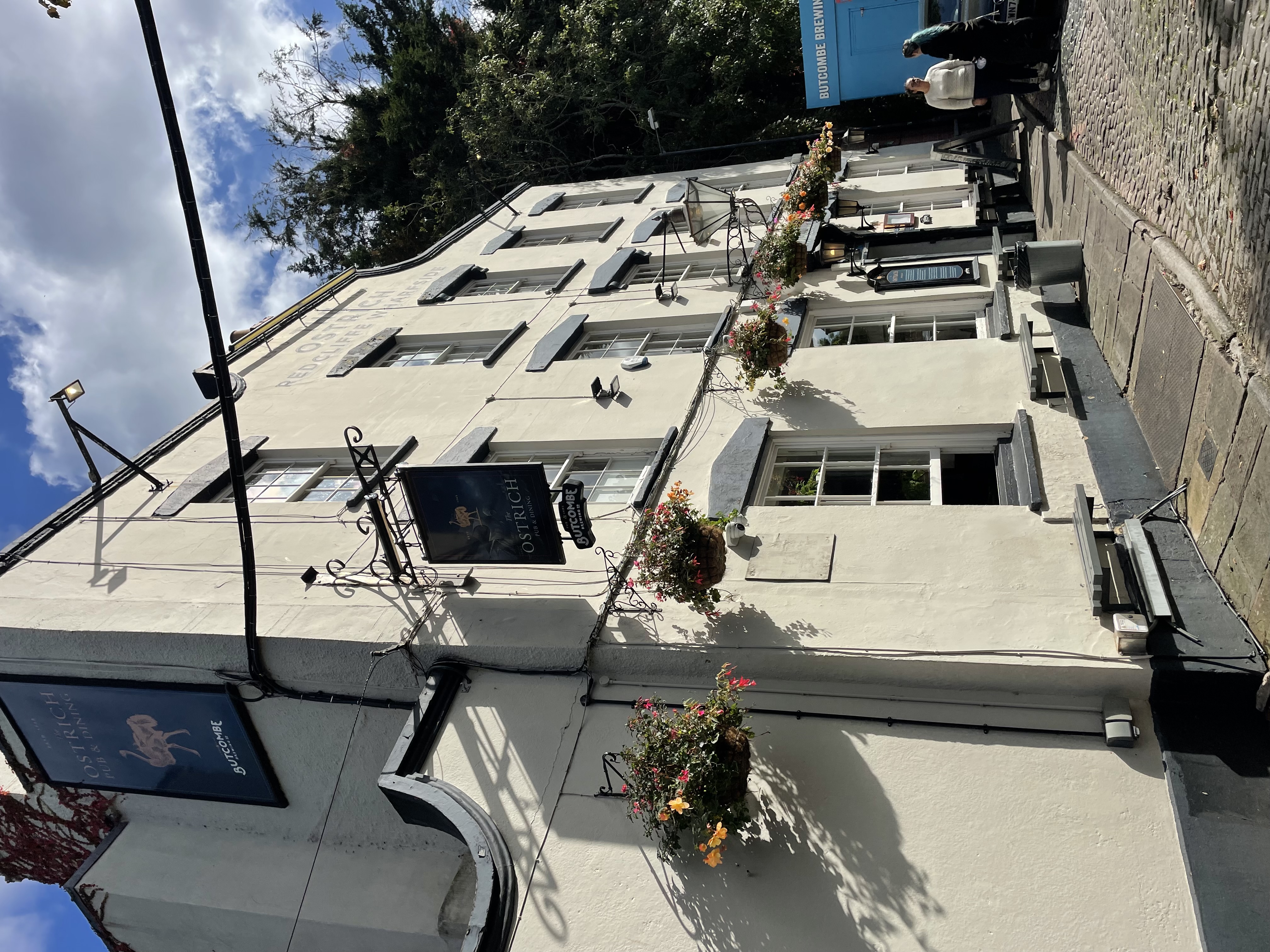 Listen to the audio information for stop 1 Listen to the reflection for stop 1
Listen to the audio information for stop 1 Listen to the reflection for stop 1
Guinea Street might look like an ordinary, charming street with a cosy pub, but it holds deep connections to Bristol's involvement in the slave trade. The street was home to several prominent slave traders who benefited from its prime location by the harbour. The name 'Guinea Street' reflects a time when European traders and explorers used 'Guinea' to broadly refer to West Africa, a region deeply exploited through the transatlantic trade.
The Royal African Company, which had a monopoly on the trade, used the symbol of an elephant and castle on its coins, connecting the street’s name to this history. The Ostrich Pub, established in 1745, likely served as a gathering spot for sailors and possibly for recruiting crew members for
slave ships.
Reflection and Prayer: Genesis 1:26-27Then God said, “Let us make mankind in our image, in our likeness, so that they may rule over the fish in the sea and the birds in the sky, over the livestock and all the wild animals, and over all the creatures that move along the ground.” So God created mankind in his own image, in the image of God he created them; male and female he created them.
Reflection: God created humanity in His image, emphasising our equal worth. Slavery fundamentally contradicts this truth.
2. St. Mary Redcliffe
Listen to the audio guide for stop 2 Listen to the reflection for stop 2
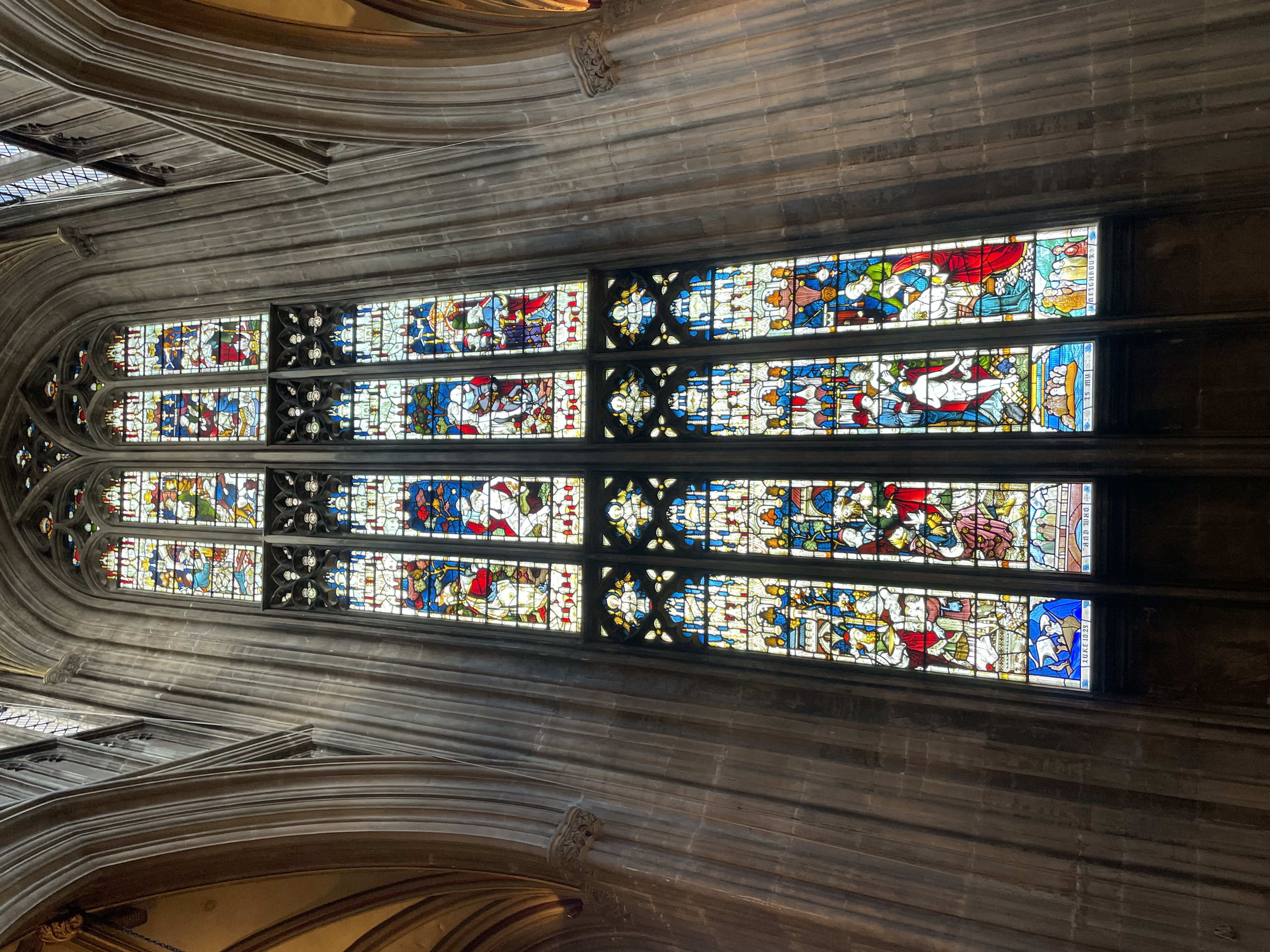 Saint Mary Redcliffe, a stunning example of Gothic architecture, has stood as a place of worship for over 800 years. Described as being Bristol’s “fairest, goodliest, and most famous parish church” by Queen Elizabeth I, it has long been a central landmark in the city. However, like many historic sites in Bristol, St Mary Redcliffe has a complex and often troubling connection to Transatlantic Chattel Slavery.
Saint Mary Redcliffe, a stunning example of Gothic architecture, has stood as a place of worship for over 800 years. Described as being Bristol’s “fairest, goodliest, and most famous parish church” by Queen Elizabeth I, it has long been a central landmark in the city. However, like many historic sites in Bristol, St Mary Redcliffe has a complex and often troubling connection to Transatlantic Chattel Slavery.
Among its memorials, you’ll find names like William Challoner, who participated in 13 slaving voyages, Robert Yeamans, a prominent merchant who owned enslaved people and land in Barbados, and Philip John Miles, a landowner, banker, Tory MP and slave owner, who was also Bristol’s first millionaire. Admiral William Penn, who is buried and commemorated in the church, is known to have been involved in one of the earliest recorded instances of an enslaved person being exchanged between Englishmen. Even his son William Penn - who founded Pennsylvania in his father’s name and was a practising Quaker - engaged in the enslavement of others, despite his faith’s teachings on equality.
In recent years, St Mary Redcliffe has taken steps to confront this uncomfortable legacy. One of the most profound ways is through the installation of their new stained-glass windows, "Who is My Neighbour?" This artwork serves as a reflection on the past while encouraging a vision of a more inclusive and just future. It invites visitors to consider questions of love, justice, and what it truly means to be a neighbour, echoing the biblical call to love others as oneself. By recognising and engaging with its history, St Mary Redcliffe offers a space for reflection, learning, and a renewed commitment to equality and justice.
Reflection and Prayer: Luke 10:26Jesus replies, "Love the Lord your God with all your heart and with all your soul and with all your strength and with all your mind; and, Love your neighbour as yourself"
3. The Hole in the Wall Pub, Queen Square
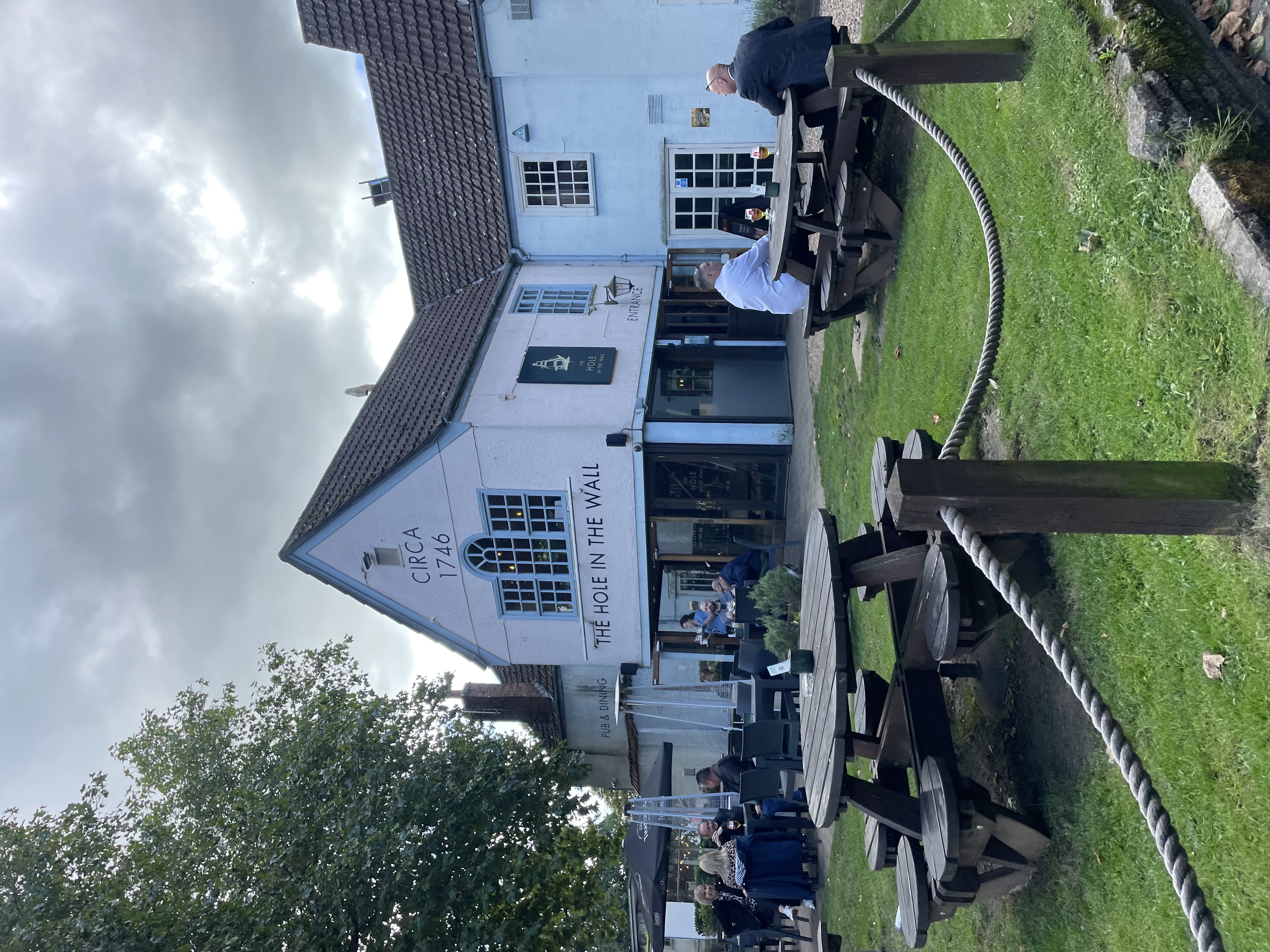 Listen to the audio guide for stop 3 Listen to the reflection for stop 3
Listen to the audio guide for stop 3 Listen to the reflection for stop 3
Bristol’s significance as a port dates back to the 13th century, growing immensely by the 17th and 18th centuries. The city played a central role in the triangular trade, which involved shipping enslaved people from Africa to the Americas and the Caribbean. These individuals faced horrific conditions, with many dying on the journey.
The Hole in the Wall Pub’s spy house highlights how local press gangs helped fill crews for these ships. Queen Square reveals the wealth accumulated through this trade, with buildings like Number 29, once owned by Nathaniel Day, who petitioned against a proposed tax on enslaved people and became Bristol’s mayor in 1737.
Reflection and Prayer: Jeremiah 5:25-29Your iniquities have turned these away, and your sins have kept good from you. For wicked men are found among my people; they lurk like fowlers lying in wait. They set a trap; they catch men. Like a cage full of birds, their houses are full of deceit; therefore, they have become great and rich; they have grown fat and sleek. They know no bounds in deeds of evil; they judge not with justice the cause of the fatherless, to make it prosper, and they do not defend the rights of the needy. Shall I not punish them for these things? declares the Lord, and shall I not avenge myself on a nation such as this?
Reflection: On the sin of slavery that allowed the powerful to become rich on the back of the profits made by slavery.
4. Pero’s Bridge
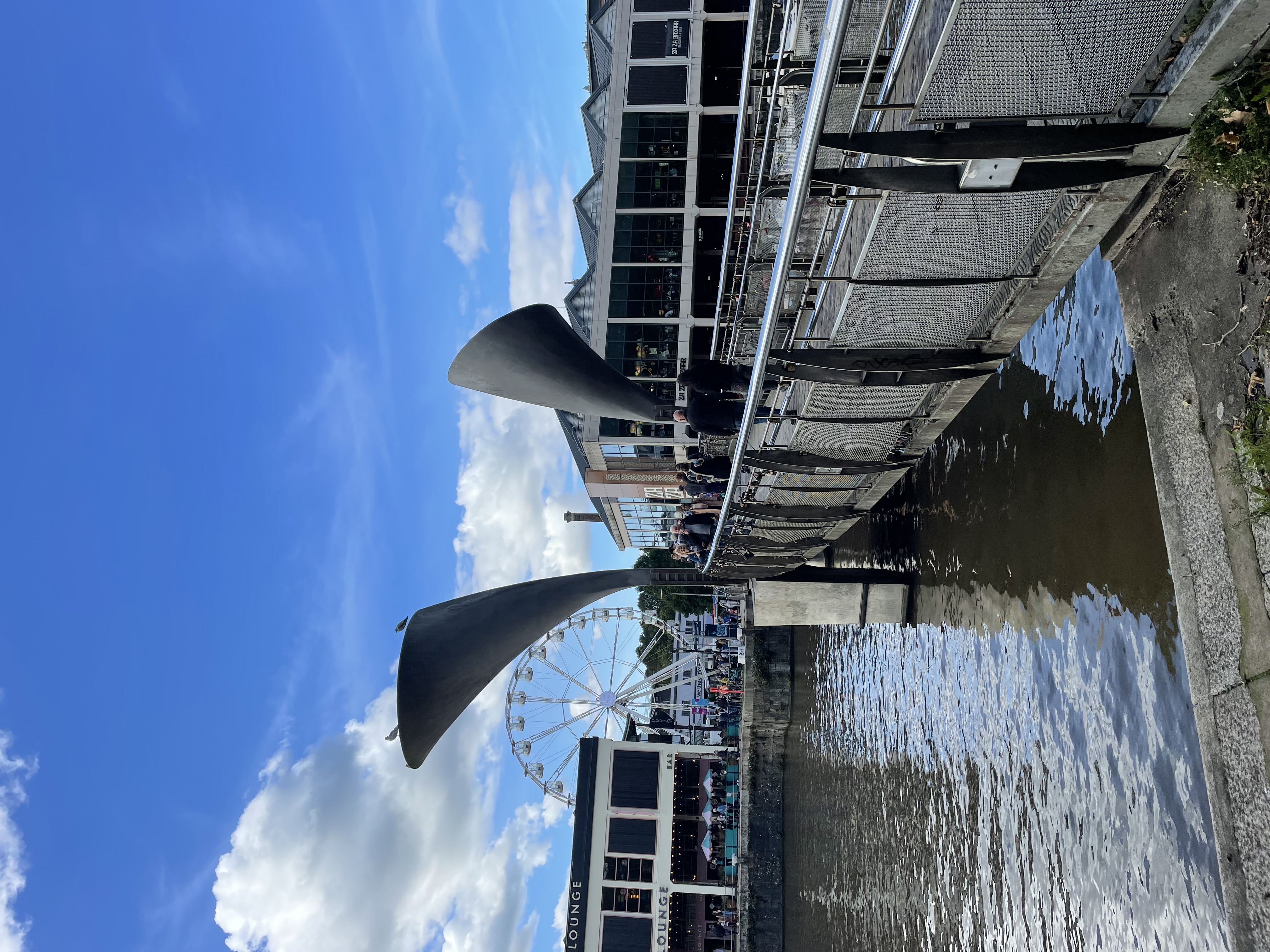 Listen to the audio guide for stop 4 Listen to the reflection for stop 4
Listen to the audio guide for stop 4 Listen to the reflection for stop 4
Pero’s Bridge, named after Pero Jones, a man enslaved in Bristol in the late 18th century, serves as a modern tribute to the city's painful history. Relatively few enslaved people arrived in Britain, so Pero would have been visible in the city.
His presence here is a stark reminder of the city's involvement in the slave trade – there is no evidence that he was ever freed, and is assumed he remained enslaved in Bristol until the day he died in 1798. The bridge, dedicated in 1998, symbolises our acknowledgment of this history and honours those affected by the trade, with Pero becoming a symbol of Bristol’s hidden past.
Reflection and Prayer: Psalm 139:13-16For you created my inmost being; you knit me together in my mother's womb. I praise you because I am fearfully and wonderfully made; your works are wonderful, I know that full well. My frame was not hidden from you when I was made in the secret place, when I was woven together in the depths of the earth. Your eyes saw my unformed body; all the days ordained for me were written in your book before one of them came to be.
Reflection: Each individual is a precious child of God; each slave who died, whose memory was obscured was created and loved by God. God knew them and loved them.
5. Bristol Cathedral
Listen to the audio guide for stop 5 Listen to the reflection for stop 5
Bristol Cathedral stands as one of the city's most historic places of worship, tracing its origins back over 900 years. Its grand architecture and rich history tell many stories, yet some of these are tied to the darker chapters of the past, particularly transatlantic chattel slavery that contributed to the wealth and development of the cathedral itself. In recent years, Bristol Cathedral has taken significant steps to confront this legacy, especially in the wake of events such as the death of George Floyd and the toppling of the Colston statue in Bristol.
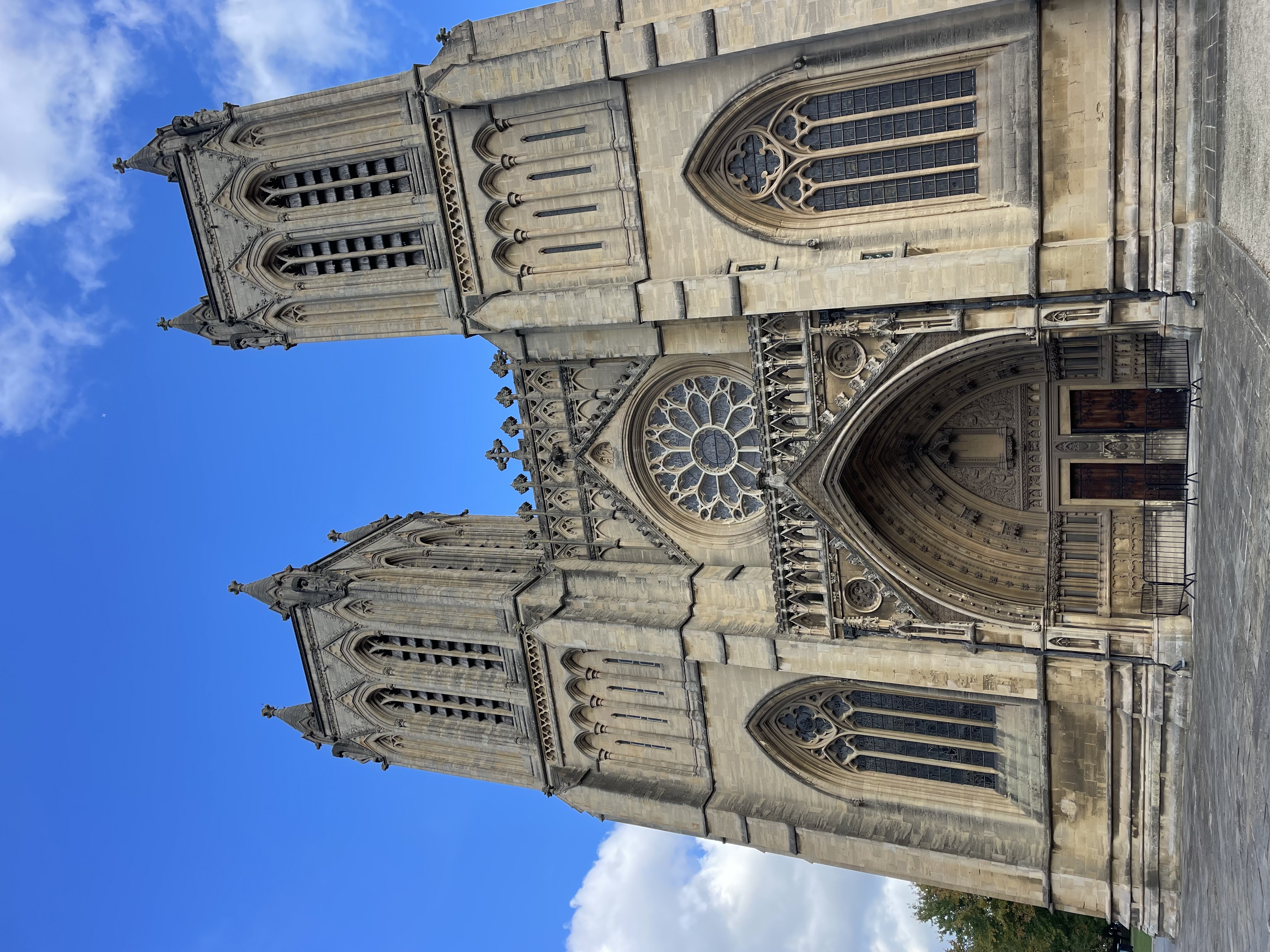
Research conducted by the cathedral uncovered that between 1670 and 1900, roughly 1,000 individuals were buried or memorialised within its grounds, with around 200 of them having direct connections to the transatlantic chattel slavery. These connections ranged from building, owning, or working in the trade to living off the proceeds or receiving compensation for emancipated enslaved people. This reality has prompted the cathedral to launch the "All God’s Children" exhibition, an effort to share the stories of those memorialised within its walls and their ties to this history.
Bristol Cathedral recognises the need to repent for the way the contributions of people of African and African Caribbean heritage have been erased from its story. The images of a Europeanised Holy Family and the many memorials celebrating individuals who gained their wealth from slavery serve as reminders of this exclusion. In acknowledgment of this history, the cathedral embraces a threefold approach: to tell the truth, lament the sin and suffering, and seek reconciliation and repair. Visitors are invited to reflect on these themes and engage with the cathedral's journey toward becoming a place of genuine welcome and inclusion for all of God’s children.
Reflection and Prayer: Revelation 7:9After this I looked, and there before me was a great multitude that no one could count, from every nation, tribe, people and language, standing before the throne and before the Lamb. They were wearing white robes and were holding palm branches in their hands.
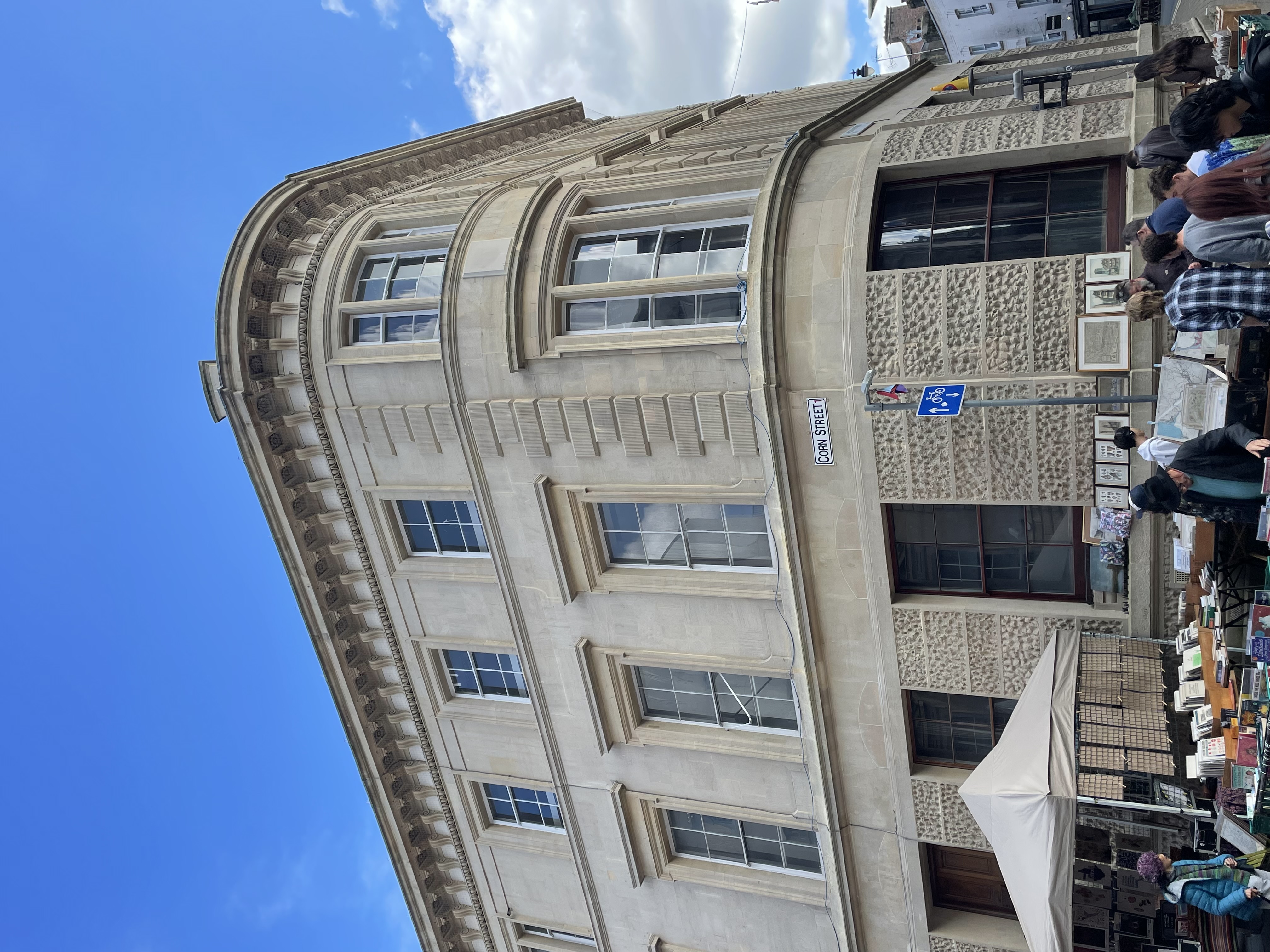 6. Old Bank, Corn Street
6. Old Bank, Corn Street
Listen to the audio guide for stop 6 Listen to the reflection for stop 6
The Old Bank was the first bank established in the city of Bristol in 1750. The bank’s origins trace back to the 18th century when it was founded by wealthy tradesmen, many of whom were involved in Transatlantic chattel slavery.
Bristol's prosperity was deeply tied to industries like glassmaking and sugar refining, which were fuelled by enslaved labour. The bank played a crucial role in managing and profiting from this trade, contributing to Bristol’s economy.
Reflection and Prayer: Micah 6:8He has shown you, O mortal, what is good. And what does the Lord require of you? To act justly and to love mercy and to walk humbly with your God.
Pause and reflect on the continuing legacy of slavery, specifically how money made during Transatlantic Chattel Slavery made Bristol what it is today; let us also reflect on how the legacy of slavery and racism have left many black communities marginalised and lacking economic justice.
7. St Stephen’s Church
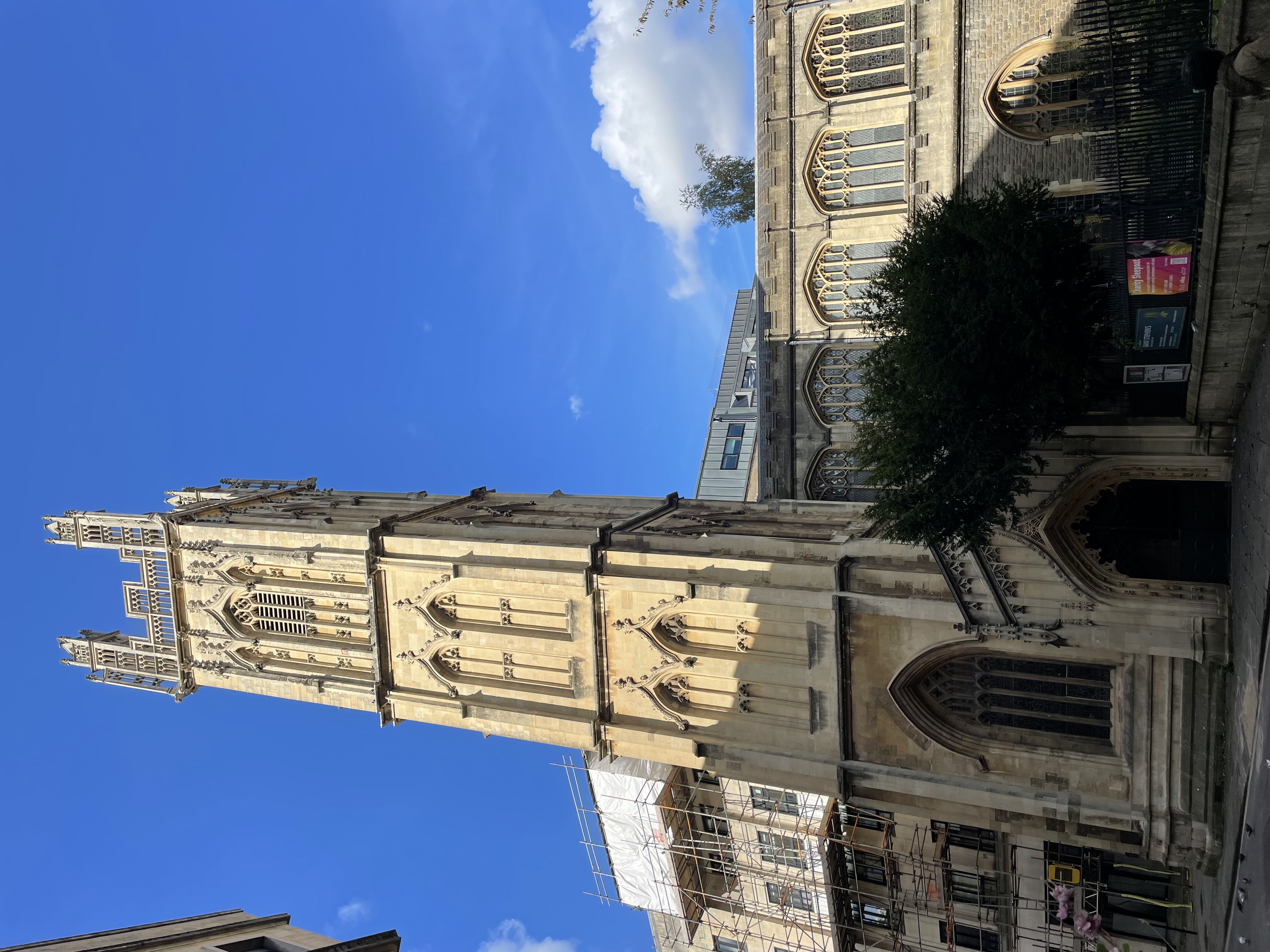 Listen to the audio guide for stop 7 Listen to the reflection for stop 7
Listen to the audio guide for stop 7 Listen to the reflection for stop 7
St Stephen’s Church stood right by the waters of Bristol harbour for centuries up until the river Frome was covered over in the 1890s. The church tower was often the first glimpse of Bristol for sailors arriving in the city. It is said that the west doors of the church were opened to bless ships moored outside before they departed on their journeys. As the harbour church, St Stephen’s has been closely connected with Bristol’s seafaring and merchant communities throughout its history. Transatlantic Chattel Slavery is an intrinsic part of the seafaring history of Bristol and therefore of St Stephen’s.
Within the church are several memorials to people directly connected with Transatlantic chattel slavery, including an agent of 14 slaving voyages, slave ship owners, and the wife of a slave ship captain. St Stephen’s also has connections with the abolitionist movement, through 18th century Rector Revd Josiah Tucker. In 2011 an artwork was installed in St Stephen’s to speak into these elements of the church’s history. The Bristol Reconciliation Reredos comprises four boldly-coloured relief panels by Graeme Mortimer Evelyn, set behind the altar, which explore themes of
hope and healing.
Reflection and Prayer: Matthew 5.23-24So when you are offering your gift at the altar, if you remember that your brother or sister has something against you, leave your gift there before the altar and go; first be reconciled to your brother or sister, and then come and offer your gift.
8. By the Plinth of the Former Edward Colston Statue
Listen to the audio guide for stop 8 Listen to the reflection for stop 8
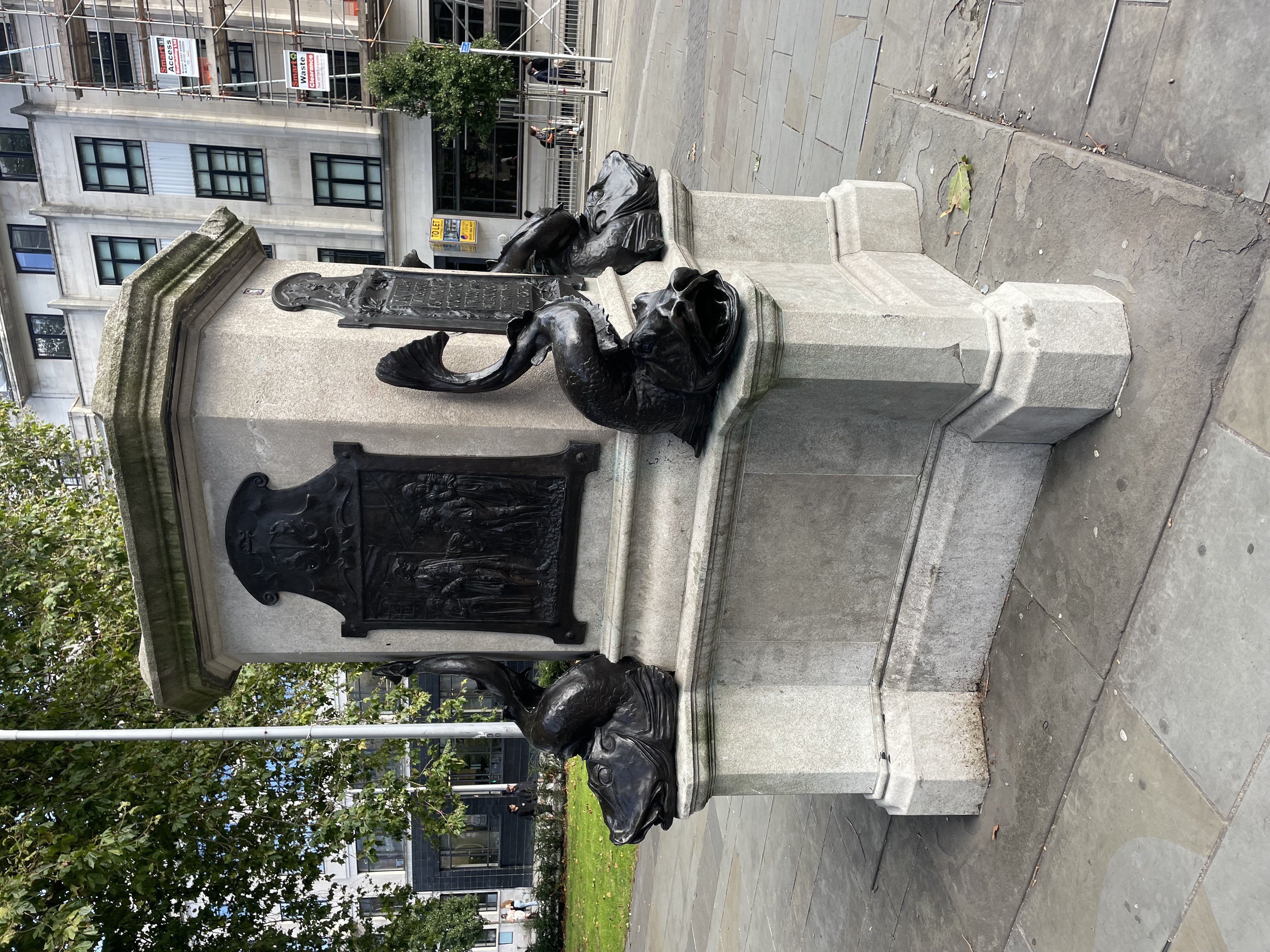 The plinth of the former Edward Colston statue is a site of immense historical and socio-political significance. It once held the statue of Edward Colston, a British merchant and deputy governor of the Royal African Company, a key player in the Transatlantic Chattel Slavery. While Colston’s philanthropy contributed to Bristol’s development, his wealth was built on human suffering. As part of the Royal African Company, he played a central role in the brutal enslavement and transportation of approximately 84,000 Africans, more than any other organisation involved in the Atlantic slave trade.
The plinth of the former Edward Colston statue is a site of immense historical and socio-political significance. It once held the statue of Edward Colston, a British merchant and deputy governor of the Royal African Company, a key player in the Transatlantic Chattel Slavery. While Colston’s philanthropy contributed to Bristol’s development, his wealth was built on human suffering. As part of the Royal African Company, he played a central role in the brutal enslavement and transportation of approximately 84,000 Africans, more than any other organisation involved in the Atlantic slave trade.
For 125 years, Bristol honoured Colston with a statue on this plinth in the heart of the city. Efforts to remove the statue or even attach a plaque acknowledging this dark history were unsuccessful. However, on June 7, 2020, following the murder of George Floyd, Black Lives Matter protesters toppled the statue and threw it into Bristol Harbour in a powerful act of resistance.
Today, the statue has been recovered and is part of an exhibit in the M-Shed museum. The display provides context for the protest, featuring first-hand accounts from those involved, and places Colston’s statue within the larger narrative of the fight against racial injustice over the last 400 years, both in Bristol and around the world.
Reflection and Prayer: Galatians 3:28There is neither Jew nor Greek, there is neither slave nor free, there is no male and female, for you are all one in Christ Jesus.
With permission from THE ROYAL GEOGRAPHICAL SOCIETY ‘The Bristol Slave Trade Trail’ written by Madge Dresser, Caletta Jordan and Doreen Taylor and published by BRISTOL CITY MUSEUM AND ART GALLERY ‘Slavery Obscured: The Social History of the Slave Trade in an English Provincial Port’ by Madge Dresser (2001).